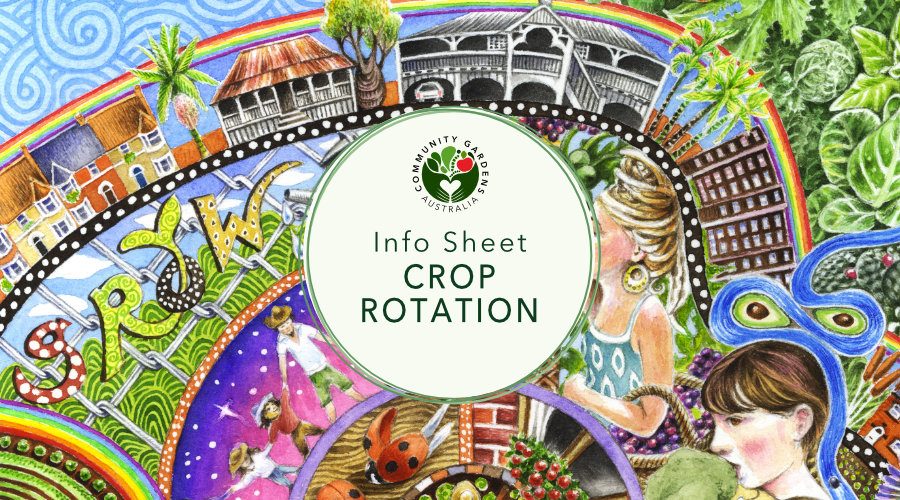INFO SHEET: Crop rotation
by Russ Grayson, updated May 2020.
Managing pests and maintain plant health
Crop rotation moves different types of vegetables through the same garden bed over time.
These are annual or biennial vegetables that go through their lifecycle, seed to seed, within one or two years.
Why rotate vegetables?
Avoid plant disease
Vegetables are rotated through a garden bed to reduce infection by plant diseases carried in the soil. Plants affected are usually those in the same botanical family, such as tomato and potato, both members of the Solanaceae family.
Maintain plant health by reducing nutrient loss
Different plant types, such as leafy green vegetables or root crops, make use of different nutrients in the soil.
Continual cultivation of the same crop in the same place in the garden may, over time, result in nutrient deficiencies in the plants unless soil fertility is maintained in other ways.
It may help to grow tomatoes every 4-5 years, brassicas every 3-4 years and bean every 3 years, only once in the same garden bed.
Planting a different type of crop in the following growing season — such as a root crop (eg. potato) after a leafy green (eg. silverbeet) — reduces the likelihood of nutrient depletion.
A gardener thins leafy green annual vegetables that have been planted into a composted and mulched garden bed.
A process over time
In crop rotation, different types of plants are alternated through the same garden bed over time.
There are different types of crop rotation, such as…
Rotation by plant type:
- legume (peas and beans) then
- fruiting vegetable (eg, capsicum) then
- leafy green vegetable (eg.
- lettuce, cabbage) and,
- finally, root crop (eg. potato)
Rotation by plant family — set up eight beds with these plant families:
- Brassicaceae (cabbage, cauliflower, broccoli, brussels sprouts, kohlrabi, radish, swede, turnip, rocket, mustard greens, mizuna, bok choy)
- Solanaceae (tomato, capsicum, potato, eggplant)
- Fabacace (broad bean, bean, peas)
- Cucurbitaceae (cucumber, squash, pumpkin, zucchini, watermelon, rockmelon)
- Apiaceae (carrot, celery, coriander, dill, fennel, parsnip, parsley, mitsuba)
- Chenopodiaceae (silver beet, beetroot, spinach)
- Asteraceae (endive, lettuce, salisfy, globe artichoke, jerusalem artichoke, sunflower)
- Amaryllidaceae (onion, shallot, leek).

